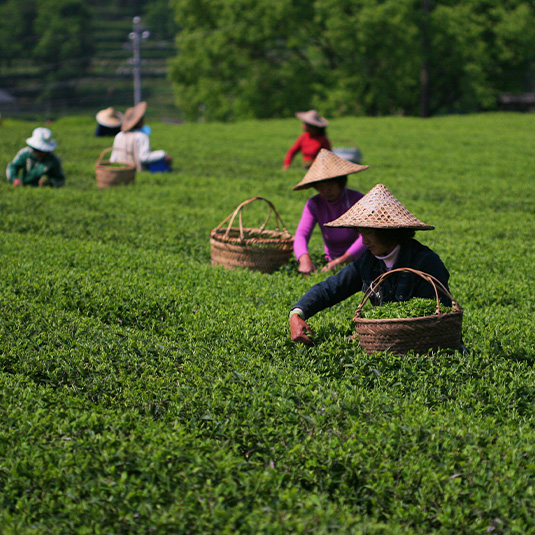We ship all over the world

The cradle of tea
The birth of tea goes back to approximately 5,000 years ago. Legend has it that in 2737 B.C. Emperor Shen Nong discovered tea. Poisoned and on the brink of death, he boiled water and some leaves accidentally fell into his cup. He was overwhelmed by the taste and feeling of well-being from this unexpected infusion that helped him heal.
Throughout history and the changing dynasties, tea preparation never ceased to evolve. It was first boiled under the Tang dynasty (618-907) before being whipped into a foam under the Song dynasty (960-1279). It was finally consumed by infusing the leaves under the Ming dynasty (1368-1644).
Throughout history and the changing dynasties, tea preparation never ceased to evolve. It was first boiled under the Tang dynasty (618-907) before being whipped into a foam under the Song dynasty (960-1279). It was finally consumed by infusing the leaves under the Ming dynasty (1368-1644).

Emblematic teas
In China, each region has its own specific expertise. Green tea makes up nearly 75% of production, with the remaining 20% dedicated to black and dark teas and 5% to oolong teas. The production of other teas, like white and yellow, is minor.
- Chinese green teas are very diverse in their leaves and aromas. One must simply go to the provinces of Fujian, Zhejiang and Anhui to come to this realization. For instance, the Zhejiang province is particularly known for its green teas such as Long Jing, an artisanal green tea appreciated above all others by the Chinese people. The most prestigious and eagerly-awaited by tea amateurs are the spring harvest green teas.

- Black teas are produced mainly for exporting. They come from the Yunnan, Anhui, Fujian, Jiangxi and Sichuan regions. Legend has it that black tea was accidentally produced on a shipment carrying cases of green tea that were fermented for too long during a long trip across the sea. Among the most famous black teas, Grand Yunnan Impérialis a flowery and mild tea, typically enjoyed in the morning.
- Oolong tea, also known as blue-green tea by the Chinese, is a tea type with varying oxidation ranging from 15% (more floral) to 70% (more woody). Relatively weak in caffeine content, it can be enjoyed from morning to night.

- Pu Erh teas are the most well-known of the dark teas. There are two types: Sheng Pu Erh (meaning “raw”), a tea left to ferment naturally, and Shou Pu Erh (meaning “cooked”), a tea that has undergone an accelerated fermentation process. One must also include Mao Cha, a tea used to create Pu Erh, either raw or cooked. Finally, one can find Pu Erh in loose leaf form – like Pu Erh Impérial, a tea with a very powerful flavor that is reminiscent of damp soil and bark – or in compressed form.
- The leaves ofSmoked teas have been twisted and then smoked. In China, these teas are produced in the Fujian province, obtained from Souchong (tea leaves that are larger and come from the lower part of the plant) and smoked on the roots of a spruce. Very low in caffeine, these teas are ideal to enjoy at any time of the day and pair well with a meal or savory breakfast.
- Finally, more rarely in China we find some classic white and yellow teas – such as Bai Mu Dan, with a woody taste that is reminiscent of autumn fruits – and prestigious like Silver Needles, a white tea made of young bugs whose leaves resemble needles.
Our Selection


